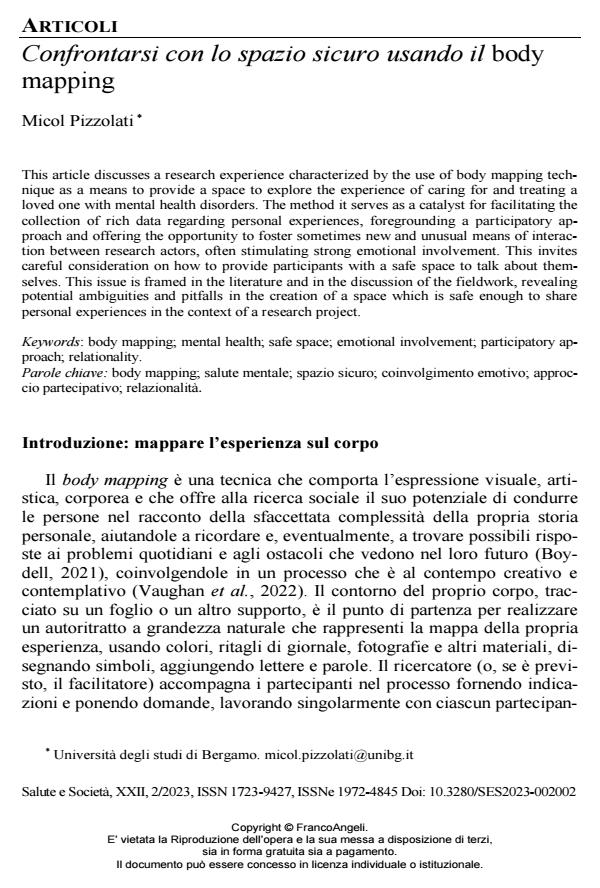Confrontarsi con lo spazio sicuro usando il body mapping
Journal title SALUTE E SOCIETÀ
Author/s Micol Pizzolati
Publishing Year 2023 Issue 2023/2
Language Italian Pages 10 P. 9-18 File size 358 KB
DOI 10.3280/SES2023-002002
DOI is like a bar code for intellectual property: to have more infomation
click here
Below, you can see the article first page
If you want to buy this article in PDF format, you can do it, following the instructions to buy download credits

FrancoAngeli is member of Publishers International Linking Association, Inc (PILA), a not-for-profit association which run the CrossRef service enabling links to and from online scholarly content.
This article discusses a research experience characterized by the use of body mapping technique as a means to provide a space to explore the experience of caring for and treating a loved one with mental health disorders. The method it serves as a catalyst for facilitating the collection of rich data regarding personal experiences, foregrounding a participatory approach and offering the opportunity to foster sometimes new and unusual means of interaction between research actors, often stimulating strong emotional involvement. This invites careful consideration on how to provide participants with a safe space to talk about themselves. This issue is framed in the literature and in the discussion of the fieldwork, revealing potential ambiguities and pitfalls in the creation of a space which is safe enough to share personal experiences in the context of a research project.
Keywords: body mapping; mental health; safe space; emotional involvement; participatory approach; relationality.
Micol Pizzolati, Confrontarsi con lo spazio sicuro usando il body mapping in "SALUTE E SOCIETÀ" 2/2023, pp 9-18, DOI: 10.3280/SES2023-002002